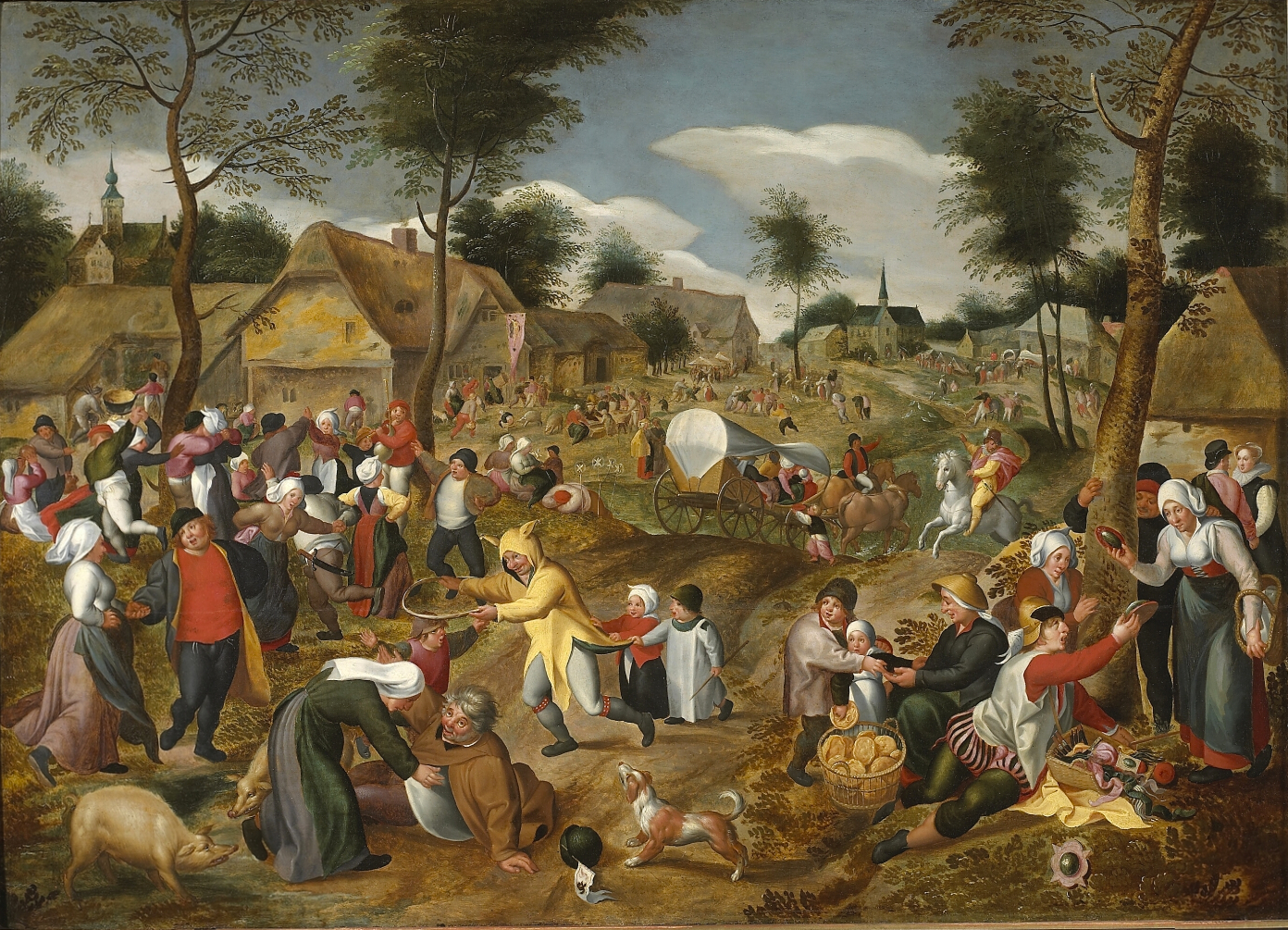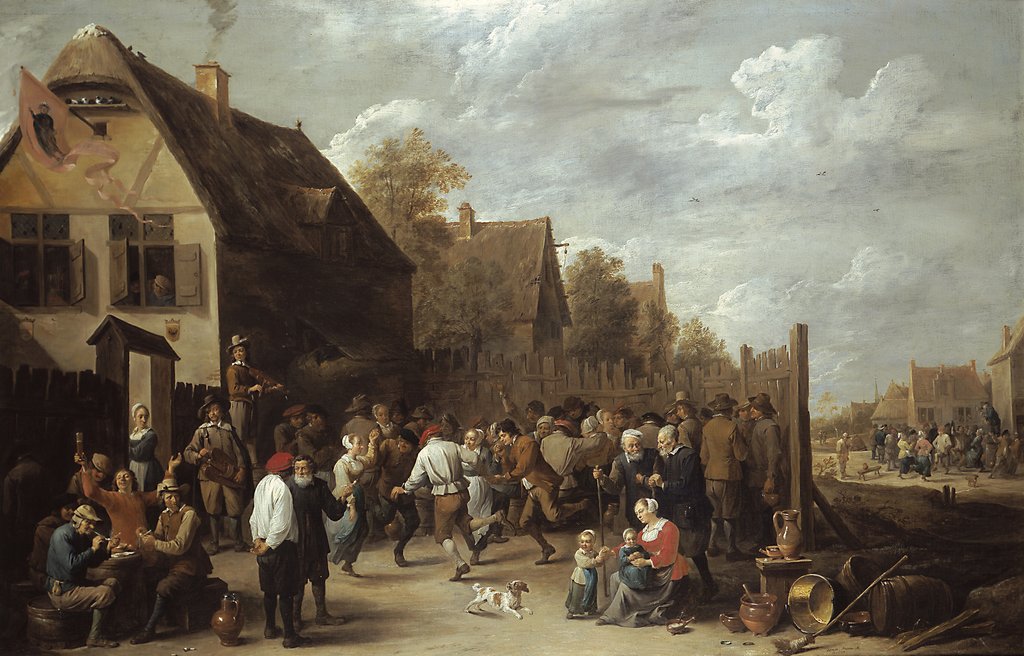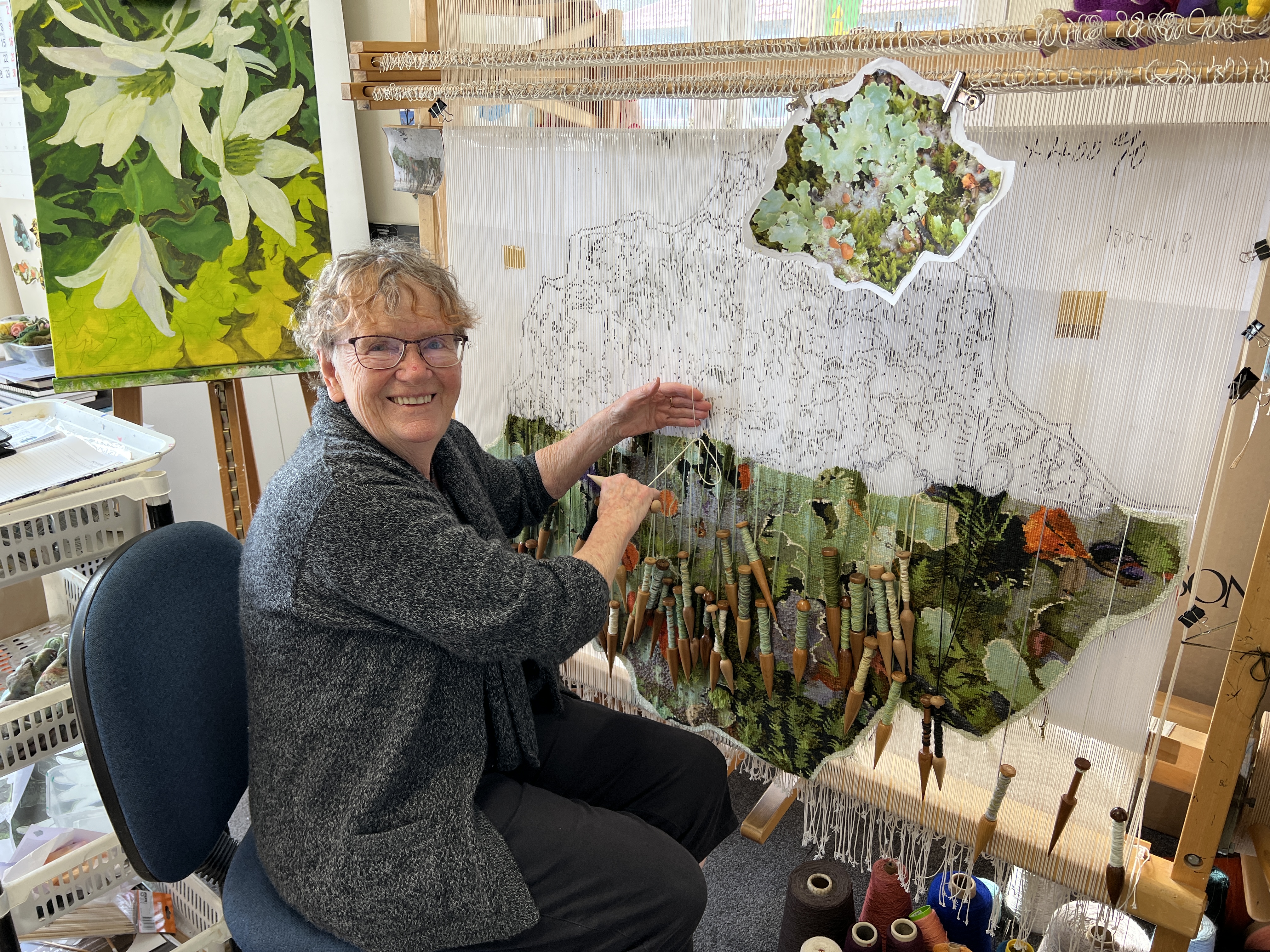|
Théobald Michau
Théobald Michau (1676–1765) was a conservative Walloon painter of landscapes, more famous in his own time than he is today. Michau was born in Tournai and was a pupil of Lucas Achtschellinck. Subjects of the country festivals ('' Kermesse'') that were popularized by David Teniers, father and son to the extent that paintings and tapestries showing such rustic themes were called ''Ténières''. Michau painted designs and perhaps provided full-scale cartoons for tapestry weavers, for surviving records of the Brussels tapestry workshop of Pieter van der Borcht record ''Teniers peints par le fameux Sr Michau'', such Teniers-like subjects painted by "the famous Sieur Michau". Among his work, on wooden or copper panels, in public collections are the ''Summer'' and ''Winter'' landscapes in Vienna. Also he was a teacher and died in Antwerp. Among his pupils was Martin J. Geeraerts, who specialised in painted bas-relief Relief is a sculptural method in which the sculpt ... [...More Info...] [...Related Items...] OR: [Wikipedia] [Google] [Baidu] |
Walloons
Walloons ( ; ; ) are a Gallo-Romance languages, Gallo-Romance ethnic group native to Wallonia and the immediate adjacent regions of Flanders, France, Germany, Luxembourg and the Netherlands. Walloons primarily speak ''langues d'oïl'' such as Belgian French, Picard language, Picard and Walloon language, Walloon. Walloons are primarily Catholic Church, Roman Catholic, with a historical minority of Protestantism which dates back to the Reformation era. In modern Belgium, Walloons are, by law, termed a "distinctive linguistic and ethnic community" within the country, as are the neighbouring Flemish people, Flemish, a Germanic peoples, Dutch (Germanic) speaking community. When understood as a regional identification, the ethnonym is also extended to refer to the inhabitants of the Walloon region in general, regardless of ethnicity or ancestry. Etymology The term ''Walloon'' is derived from ''*walha'', a Proto-Germanic term used to refer to Celtic languages, Celtic and Latin speake ... [...More Info...] [...Related Items...] OR: [Wikipedia] [Google] [Baidu] |
Tournai
Tournai ( , ; ; ; , sometimes Anglicisation (linguistics), anglicised in older sources as "Tournay") is a city and Municipalities in Belgium, municipality of Wallonia located in the Hainaut Province, Province of Hainaut, Belgium. It lies by road southwest of the centre of Brussels on the river Scheldt, and is part of Eurometropolis Lille–Kortrijk–Tournai, In 2022, the municipality of Tournai had an estimated population of 68,518 people. Tournai is one of the oldest cities in Belgium and has played an important role in the country's cultural history. It was the first capital of the Francia, Frankish Empire, with Clovis I being born here. Geography Tournai lies by road southwest of the centre of Brussels on the river Scheldt. Administratively, the town and municipality is part of the Hainaut Province, Province of Hainaut, in the Wallonia region of southwest Belgium. The municipality has an area of . Tournai has its own Arrondissements of Belgium, arrondissements, both ad ... [...More Info...] [...Related Items...] OR: [Wikipedia] [Google] [Baidu] |
Lucas Achtschellinck
Lucas Achtschellinck (baptized 16 January 1626 – buried 12 May 1699) was a Southern Netherlands, Flemish landscape painter. Lucas Achtschellinck at the Netherlands Institute for Art History He is counted among the landscape painters active in Brussels referred to as the ''School of Painters of the Sonian Forest'' who all shared an interest in depicting scenes set in the Sonian Forest, which is located near Brussels.Simon Meynen, ''L'École des peintres de la forêt de Soignes Un paysage identitaire à Bruxelles au XVIIe'' in: Koregos revue et en ... [...More Info...] [...Related Items...] OR: [Wikipedia] [Google] [Baidu] |
Kermesse (festival)
Kermesse, or kermis, or kirmess, is an outdoor fair or festival usually organized for charitable purposes. The term was derived from 'kerk' (church (building), church) and 'mis' (mass (liturgy), mass) in the original Dutch language term, and was borrowed in English language, English, French language, French, Spanish language, Spanish and many other languages. It originally denoted a mass and patronal festival held on the anniversary of the foundation of a church (or the parish (Catholic Church), parish) and in honour of the patron saint. Such celebrations were regularly held in the Low Countries, in Central Europe and also in northern France, and were accompanied by feasting, dancing and competitions of all kinds. The Kirchweih is the German equivalent, while church ale was a name of similar festivals in England. Many Catholic churches (parishes) still have patronal festivals of some sort for the anniversary of the church's founding, or the feast day of the saint it is dedicated ... [...More Info...] [...Related Items...] OR: [Wikipedia] [Google] [Baidu] |
David Teniers The Elder
David Teniers the Elder (158229 July 1649), Flemish painter, was born at Antwerp of a family originally from Ath. Biography The Teniers family of painters came from Ath, a town in Hainaut.About his family, see Jules Dewert, ''Origine wallonne des peintres Teniers'', in the ''Bulletin de la Commission royale d'Histoire'', 1911, n° 80, pp. 287-319, ''on line'' in the Portail Persé Having received his first training in the painter's art from his brother Juliaan Teniers, Juliaen, he studied under Rubens in Antwerp, and subsequently under Elsheimer in Rome; he became a member of the Antwerp guild of painters in 1606. Though his ambition led him at times to try his skill in large religious, historical and mythological compositions, his claim to fame depends chiefly on his landscapes and paintings of peasants carousing, of kermesse scenes and the like, which are marked by a healthy sense of humour, and which are not infrequently confused with the early works of his son Dav ... [...More Info...] [...Related Items...] OR: [Wikipedia] [Google] [Baidu] |
David Teniers The Younger
David Teniers the Younger or David Teniers II (bapt. 15 December 1610 – 25 April 1690) was a Flemish Baroque painter, printmaker, draughtsman, miniaturist painter, staffage painter, copyist and art curator. He was an extremely versatile artist known for his prolific output.Teniers the Younger, David at the National Gallery of Art He was an innovator in a wide range of genres such as history painting, genre painting, landscape painting, portrait and still life. He is now best remembered as the leading Flemish genre painter of his day.David Teniers (II) at the Netherlands Institute for Art History Teniers is particularly known for develo ... [...More Info...] [...Related Items...] OR: [Wikipedia] [Google] [Baidu] |
Tapestry
Tapestry is a form of Textile arts, textile art which was traditionally Weaving, woven by hand on a loom. Normally it is used to create images rather than patterns. Tapestry is relatively fragile, and difficult to make, so most historical pieces are intended to hang vertically on a wall (or sometimes in tents), or sometimes horizontally over a piece of furniture such as a table or bed. Some periods made smaller pieces, often long and narrow and used as borders for other textiles. Most weavers use a natural warp thread, such as wool, linen, or cotton. The warp and weft, weft threads are usually wool or cotton but may include silk, gold, silver, or other alternatives. In Late Middle Ages, late medieval Europe, tapestry was the grandest and most expensive medium for figurative images in two dimensions, and despite the rapid rise in importance of painting it retained this position in the eyes of many Renaissance patrons until at least the end of the 16th century, if not beyond. Th ... [...More Info...] [...Related Items...] OR: [Wikipedia] [Google] [Baidu] |
Cartoon
A cartoon is a type of visual art that is typically drawn, frequently Animation, animated, in an realism (arts), unrealistic or semi-realistic style. The specific meaning has evolved, but the modern usage usually refers to either: an image or series of images intended for satire, caricature, or humor; or a motion picture that relies on a sequence of illustrations for its animation. Someone who creates cartoons in the first sense is called a ''cartoonist'', and in the second sense they are usually called an ''animator''. The concept originated in the Middle Ages, and first described a preparatory drawing for a piece of art, such as a painting, fresco, tapestry, or stained glass window. In the 19th century, beginning in ''Punch (magazine), Punch'' magazine in 1843, cartoon came to refer – ironically at first – to humorous artworks in magazines and newspapers. Then it also was used for political cartoons and comic strips. When the medium developed, in the early 20th century, it ... [...More Info...] [...Related Items...] OR: [Wikipedia] [Google] [Baidu] |
Brussels Tapestry
Brussels tapestry workshops produced tapestry from at least the 15th century, but the city's early production in the Late Gothic International style was eclipsed by the more prominent tapestry-weaving workshops based in Arras and Tournai. In 1477 Brussels, capital of the Duchy of Brabant, was inherited by the house of Habsburg; and in the same year Arras, the prominent center of tapestry-weaving in the Low Countries, was sacked and its tapestry manufacture never recovered, and Tournai and Brussels seem to have increased in importance. The only millefleur tapestry to survive together with a record of its payment was a large heraldic millefleur carpet of very high quality made for Duke Charles the Bold of Burgundy in Brussels, of which part is now in the Bern Historical Museum. Sophie Schneebalg-Perelman's attribution to Brussels of ''The Lady and the Unicorn'' at the Musée de Cluny may well be correct. Under the influence of Raphael The great period of Renaissance weaving in Br ... [...More Info...] [...Related Items...] OR: [Wikipedia] [Google] [Baidu] |
Antwerp
Antwerp (; ; ) is a City status in Belgium, city and a Municipalities of Belgium, municipality in the Flemish Region of Belgium. It is the capital and largest city of Antwerp Province, and the third-largest city in Belgium by area at , after Tournai and Couvin. With a population of 565,039, it is the List of most populous municipalities in Belgium, most populous municipality in Belgium, and with a metropolitan population of over 1.2 million people, the country's Metropolitan areas in Belgium, second-largest metropolitan area after Brussels. Definitions of metropolitan areas in Belgium. Flowing through Antwerp is the river Scheldt. Antwerp is linked to the North Sea by the river's Western Scheldt, Westerschelde estuary. It is about north of Brussels, and about south of the Netherlands, Dutch border. The Port of Antwerp is one of the biggest in the world, ranking second in Europe after Rotterdam and List of world's busiest container ports, within the top 20 globally. The city ... [...More Info...] [...Related Items...] OR: [Wikipedia] [Google] [Baidu] |
Marten Jozef Geeraerts
Marten Jozef Geeraerts (1707–1791) was a Flemish historical painter. He excelled in grisaille painting in imitation of bas-reliefs. Life Born at Antwerp, he was intended for the law, and studied in the Jesuits' College. Preferring art, however, he became a pupil of Abraham Godijn, and was made free of the Guild of St. Luke in 1731. In 1741 he became one of the six directors of the Academy of Antwerp, who filled that office gratuitously. He died at Antwerp in 1791. Major works *Royal Museum of Fine Arts, Antwerp: ''The Fine Arts''. 1760. *Royal Museums of Fine Arts of Belgium: ** ''Christ and the Disciples at Bmmaus'' ** ''The Saviour at the House of Simon the Pharisee'' ** ''The Sons of Aaron punished by Fire from Heaven'' ** ''The Woman taken in Adultery'' ** ''Abraham and Melchisedeck'' ** ''The Sacrifice of Abraham'' ** ''The Sacrifice of Eli'' *Mauritshuis: ''Autumn''. *Palais des Beaux-Arts de Lille: ''Children with Goat''. *Kunsthistorisches Museum: ''Cupid and Psyche ... [...More Info...] [...Related Items...] OR: [Wikipedia] [Google] [Baidu] |
Bas-relief
Relief is a sculptural method in which the sculpted pieces remain attached to a solid background of the same material. The term ''relief'' is from the Latin verb , to raise (). To create a sculpture in relief is to give the impression that the sculpted material has been raised above the background plane. When a relief is carved into a flat surface of stone (relief sculpture) or wood ( relief carving), the field is actually lowered, leaving the unsculpted areas seeming higher. The approach requires chiselling away of the background, which can be time-intensive. On the other hand, a relief saves forming the rear of a subject, and is less fragile and more securely fixed than a sculpture in the round, especially one of a standing figure where the ankles are a potential weak point, particularly in stone. In other materials such as metal, clay, plaster stucco, ceramics or papier-mâché the form can be simply added to or raised up from the background. Monumental bronze reliefs are ... [...More Info...] [...Related Items...] OR: [Wikipedia] [Google] [Baidu] |










